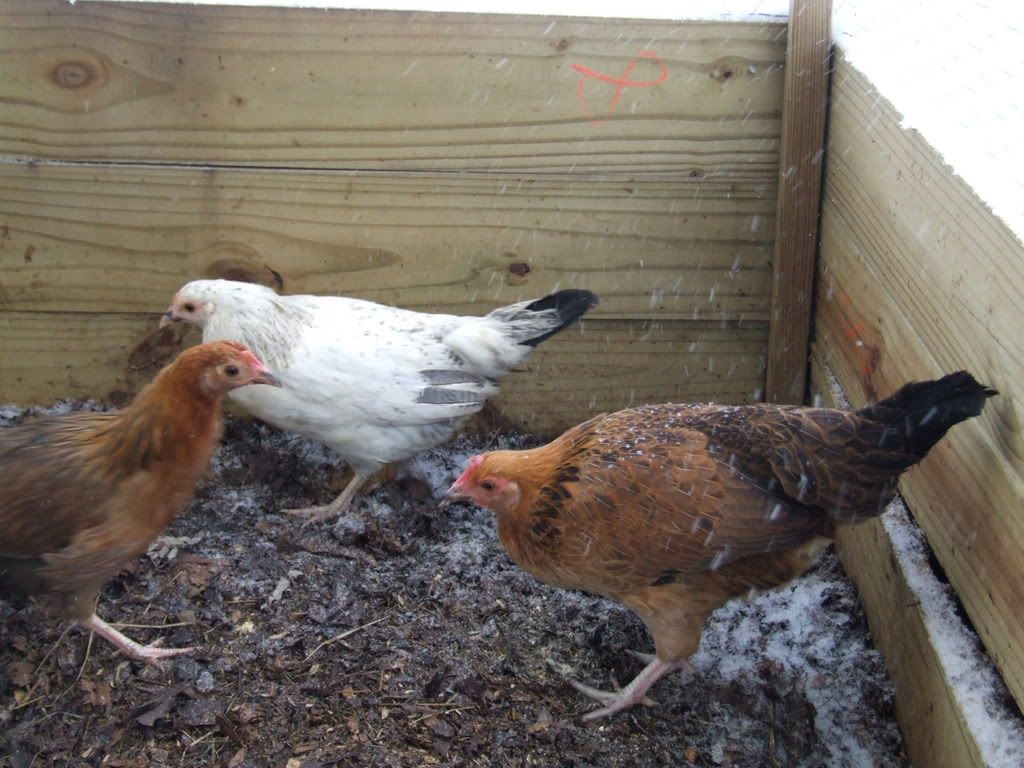I moved the hens out of the brooder last Monday to make room for the new chicks. One of the bantam cross hens was so freaked out that she flew against the door hard enough to open it. I tried to herd her back into the house, but she was having none of it. After a few times around the yard, she discovered the overgrown forest belt at the bottom of the hill, and then I had no possibility of catching her. I spent about 45 minutes crashing through brambles, trying to head her back up towards the house, but she was too canny to fall for that. Finally, I decided to let her be a wild chicken if that's what she wanted so much. There are coons and foxes out there, so I didn't expect that she'd live very long.

All the other hens have settled in well out at the land. For now, I have them confined to their mobile house, to establish that it is home for them. Also, the pasture growth is too new to let them go scratching it wherever they want. However, most of the grain field is covered with the matted down dead growth from last year, so I'm moving the chicken house over that to tear it up and make it easier for the new grass to grow.
The new chicks arrived last Wednesday. I ordered 50 straight run Silver Laced Wyandottes. The cockerels will be slaughtered as fryers or broilers, and the pullets will be added to the laying flock. They'll look something like this when they're grown.

I had wanted to order ducklings first, but the hatchery was behind on orders since the ducks hadn't even started laying yet! It figures that the ducks would throw a wrench in the plans. It will probably be another month or so before I'm able to get any ducklings. I'm planning to get runner ducks (assorted colors) and Pekins.
A few days ago, in the evening, I saw the wild chicken again. She was poking about the bottom of our yard, although as soon as she saw me she ducked back into the brambles again. I'm surprised that she managed to survive out there. After I saw her a few more times, I decided to set up a live trap for her. We got a Havahart raccoon trap in Arizona, when the badgers destroyed our duck flock. It never caught anything there, but it was worth a shot.

I only opened one end, and set a bowl of corn at the closed end. I sprinkled some of the corn at the entrance to attract her. I wasn't convinced that she would be heavy enough to trip it, but it was worth a try. Last night, the trap was still open and she was wandering around the yard. There was a storm blowing up, so I think she wanted to get back into the brooder. Since it's now full of chicks, I couldn't open it up for her. At one point she walked past the trap and looked in at the bowl of corn, but she didn't enter it.
I guess she decided to go for it, because this morning there she was in the trap, with the door closed behind her. Now I can take her out to rejoin the others at the land.
